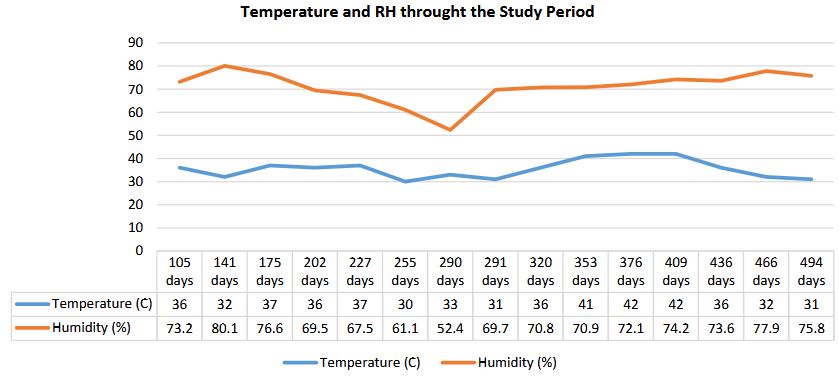Exploring the stability of Mahatiktaka Ghrita: A comprehensive study on Microbial Integrity
DOI:
https://doi.org/10.21760/jaims.9.11.14Keywords:
Stability, Microbial profile, Mahatiktaka Ghrita, Climatic conditionsAbstract
Background: The market for herbal, herbo-mineral, and traditional medicines has grown significantly in recent decades. However, a major challenge to their broader adoption is the limited information on their stability and shelf life. This study was conducted to assess the stability of Mahatiktaka Ghrita against microbial contamination when prepared and stored under different climatic conditions and temperatures. Aim: To evaluate the stability of Mahatiktaka Ghrita and monitor microbial contamination in the finished product at different time intervals and at different climatic conditions (different temperature and humidity set ups). Materials and Methods: Samples of Mahatiktaka Ghrita were studied to inspect microbial contamination at different climatic conditions. The study was conducted at Microbiology Laboratory, Institute of Teaching and Research in Ayurveda (ITRA), Jamnagar, Gujarat, India. Observations & Results: The microbiological study of Mahatiktaka Ghrita was carried out as per the samples utilized in clinical study. Further studies were carried out at regular time intervals up to 494 days. Conclusion: In microbiological study of Mahatiktaka Ghrita, growth of microorganisms either bacterial or fungal was not found till 494 days from the date of preparation, which shows its intact stability and good shelf life.
Downloads
References
Kommanaboyina B, Rhodes CT. Trends in stability testing, with emphasis on stability during distribution and storage. Drug Development and Industrial Pharmacy 1999; 25(7):857-868.
Agnivesha, Charaka Samhita of Acharya Charaka, Dridhabala krit, edited by Vaidya Yadavaji Trikamaji Acharya. Sutrasthana, Ch.13, Ver.13. 2nd edition. Varanasi: Chaukhambha Surbharati Prakashan; 2020.p.82.
Utility of Ghrita. International Journal of Food and Nutritional Sciences 2022;11(7): 3400-3412.
Agnivesha, Charaka Samhita of Acharya Charaka, Dridhabala krit, edited by Vaidya Yadavaji Trikamaji Acharya. Chikitsasthana, Ch.7, Ver.144-150. 2nd edition. Varanasi: Chaukhambha Surbharati Prakashan; 2020.p.457.
Ankit G, Mundeep J, Prajapati PK. Shelf life of Ayurvedic dosage forms - Traditional view, current status and prospective need. Indian J Tradit Knowl 2011; 10(4):672-677.
Dr. Brahmanand Tripathi, editor. Sharangadhara Samhita of Acharya Sharangadhara with Dipika Hindi Commentary, Paribhasha Prakarana Cha.2 Ver. 55, Reprint ed. Varanasi: Choukhamba Surbharti Prakashan; 2020. p.14
Acharya Siddhinandan Mishra, editor. Yogaratnakara with Siddhiprada Hindi Commentry, Jwaradhikara Cha. 2 Ver. 172, first edition. Varanasi: Chaukhamba Orientalia; 2020, p.210
Shelf life or expiry date for Ayurvedic medicines- Drugs and Cosmetics (Amendment) Rules, 2005 by Ministry of Health and Family Welfare, Govt. of India. Available from: shelf_life_notification_241105_.pdf (amam-ayurveda.org)
Available from: https://www.accuweather.com/en/in /jamnagar/188165/january-weather/188165?year= 2024
Available from: https://www.indianclimate.envitrans. com/relative-humidity-data.php
Dubey NK, Kumar A, Singh P, Shukla R. Microbial contamination of raw materials: A major reason for the decline of India’s share in the global herbal market. Current Science, 2008; 95(6): 717-718.















